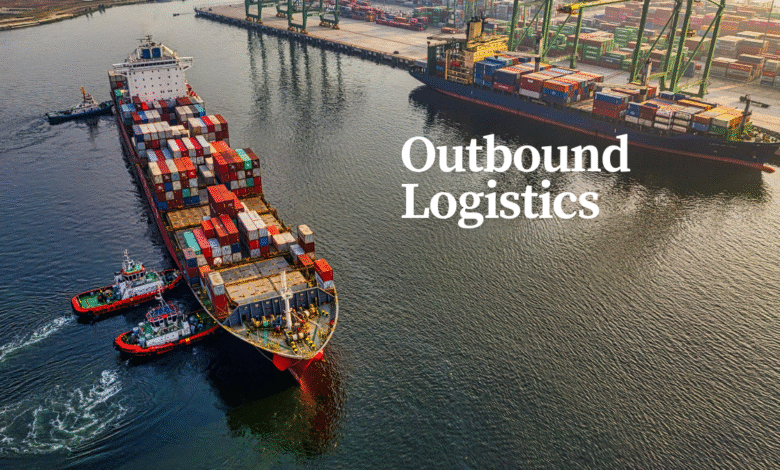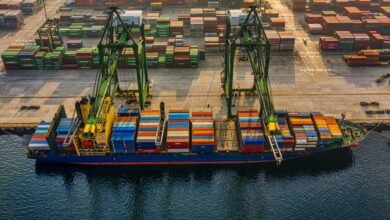How ProcurementNation.com Outbound Logistics Works: A Complete Guide

Outbound logistics plays a pivotal role in the overall supply chain, as it involves the processes that occur after goods have been manufactured or ordered. It focuses on the movement of finished products from a warehouse to the customer, whether that customer is a retailer or an end consumer. In this guide, we’ll break down how ProcurementNation.com manages outbound logistics, highlighting its key components and best practices.
What Is Outbound Logistics?
Outbound logistics refers to the activities involved in storing and transporting finished goods from a company’s warehouse to the end customer. This process encompasses everything from order fulfillment to delivery, ensuring that the products reach their destination on time and in good condition.
For example, once a customer places an order on ProcurementNation.com, the outbound logistics team picks, packs, and ships the product to the customer’s address. It’s the final leg of the supply chain, where the goods leave the warehouse and make their way into the hands of the customer.
Key Components of Outbound Logistics
Effective outbound logistics relies on several key components to ensure smooth and efficient delivery. Let’s take a look at the critical elements:
Inventory Management
The process of tracking stock levels, ensuring availability, and preventing overstocking or stockouts. Proper inventory management ensures that goods are available for timely dispatch without delays.
Warehousing
Warehouses serve as storage facilities for products before they are dispatched. Efficient warehousing ensures that products are well-organized, reducing the time spent picking and packing orders.
Order Fulfillment
This is the process of receiving, processing, and delivering customer orders. It includes picking the correct items from the warehouse, packaging them securely, and ensuring they are shipped promptly.
Transportation and Delivery
The actual movement of goods from the warehouse to the customer. This involves choosing the right delivery methods, whether by road, air, or sea, and ensuring the goods are delivered within the promised time frame.
The Outbound Logistics Process: Step by Step
The outbound logistics process can be broken down into several key steps, ensuring that the customer receives their products accurately and on time:
- Order Placement: The customer places an order on ProcurementNation.com.
- Order Processing: The system automatically processes the order, checking inventory and verifying payment.
- Picking: Warehouse staff retrieve the correct items based on the customer’s order.
- Packing: Products are securely packed to prevent damage during transit.
- Shipping: The order is dispatched to the customer via the chosen delivery method.
- Delivery: The package is delivered to the customer, completing the outbound logistics process.
Difference Between Inbound and Outbound Logistics
| Aspect | Inbound Logistics | Outbound Logistics |
| Definition | Refers to the movement of raw materials or components into the warehouse or production facility. | Refers to the movement of finished products from the warehouse to the end customer. |
| Focus | Supply-side processes, including procurement and inventory management. | Demand-side processes, focusing on order fulfillment and delivery to customers. |
| Primary Activities | Supplier relationships, receiving goods, storage, and managing raw materials. | Order processing, packing, shipping, and delivery. |
| Goal | Ensuring timely delivery of materials for production. | Ensuring timely delivery of finished goods to customers. |
| Key Operations | Sourcing, transportation from suppliers, receiving, and stock management. | Picking, packing, shipping, and managing transportation to customers. |
| Impact on Business | Impacts production timelines, costs of materials, and overall supply chain efficiency. | Directly affects customer satisfaction, delivery speed, and product availability. |
| Inventory Management | Focuses on raw material inventory and stock levels for production. | Focuses on finished goods inventory ready for shipping. |
| Technology Used | Supplier portals, procurement software, and inventory management tools. | Order management systems, warehouse management systems (WMS), and tracking software. |
Why Outbound Logistics Matters for Businesses
Outbound logistics is crucial for businesses because it directly impacts customer satisfaction, brand loyalty, and operational efficiency. Here’s why it matters:
- Customer Satisfaction: Timely and accurate delivery is key to keeping customers happy and encouraging repeat business.
- Efficiency: Well-managed outbound logistics reduce delays and ensure a smooth order fulfillment process.
- Cost Savings: Streamlined logistics reduce overhead costs and minimize wasted resources in the supply chain.
Technologies Used in Outbound Logistics
Modern outbound logistics relies heavily on technology to improve speed, accuracy, and efficiency. Some of the key technologies include:
- Warehouse Management Systems (WMS): Software that helps track inventory, manage stock levels, and optimize picking processes.
- Automation: Automated systems for sorting, packing, and labeling products reduce human error and speed up processes.
- Tracking Tools: Real-time tracking systems allow customers to monitor their shipments, ensuring transparency and reducing customer inquiries.
Common Challenges in Outbound Logistics
While outbound logistics is essential for customer satisfaction, it also comes with its fair share of challenges:
- Delays: Shipping delays can result from bad weather, customs issues, or carrier problems, negatively impacting customer satisfaction.
- Inventory Errors: Incorrect stock levels can lead to overselling or delays in fulfilling orders.
- Rising Fuel Costs: Increased transportation costs can eat into profits, especially when fuel prices fluctuate.
Best Practices for Streamlining Outbound Logistics
- Optimize Routes: Use route optimization software to determine the most efficient delivery paths, saving both time and fuel.
- Consolidate Shipments: Grouping multiple orders for the same location can reduce costs and improve delivery efficiency.
- Invest in Automation: Automated packing, sorting, and labeling reduce human error and speed up processes.
Future Trends in Outbound Logistics
- AI and Machine Learning: These technologies will be used to predict demand, optimize inventory management, and automate key tasks.
- Real-Time Tracking: Advancements in GPS and IoT technology will allow customers to track shipments in real-time, enhancing transparency.
- Green Logistics: Companies are focusing on reducing their carbon footprint by utilizing electric vehicles and optimizing routes to cut down on fuel consumption.
Conclusion
Outbound logistics is an integral part of the supply chain that ensures products reach customers quickly, safely, and efficiently. From inventory management to delivery, every step of the outbound logistics process has an impact on customer satisfaction and business performance. By understanding and optimizing outbound logistics, ProcurementNation.com can continue to provide top-quality service while staying ahead of the competition.



